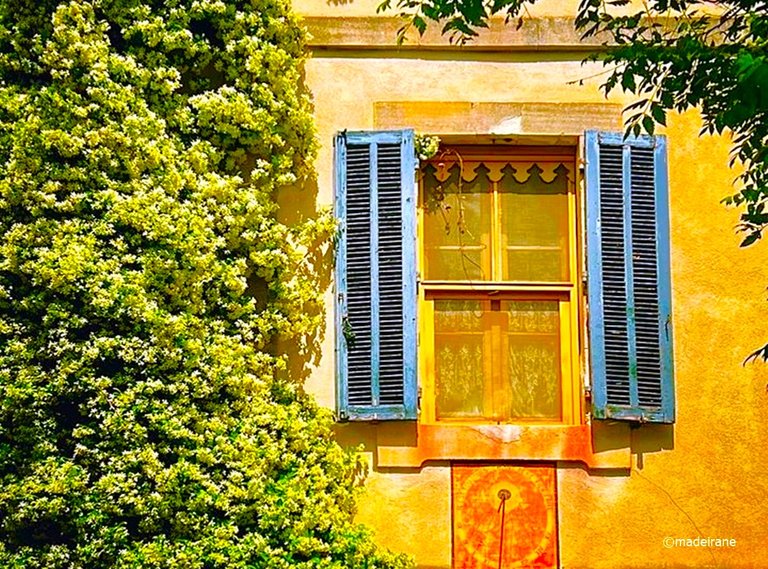
Today in my review I want to return to my beloved Provence, about which I have already written a lot and about my journey through the wonderful region of France. And my review will be dedicated to the city of Saint-Rémy de Provence. Not the city itself, but its attractions. But first things first.
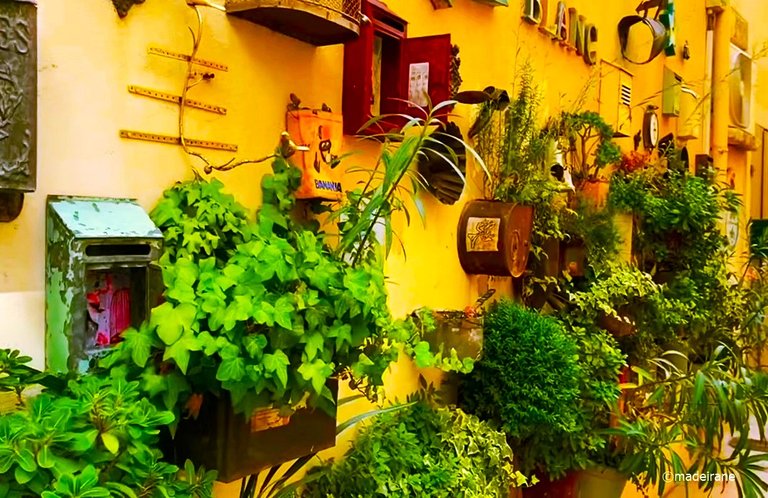
Traveling independently by car, in our case a rental car, has its advantages. And the main one is that we can stop wherever we want and watch what we like. It was the same this time.
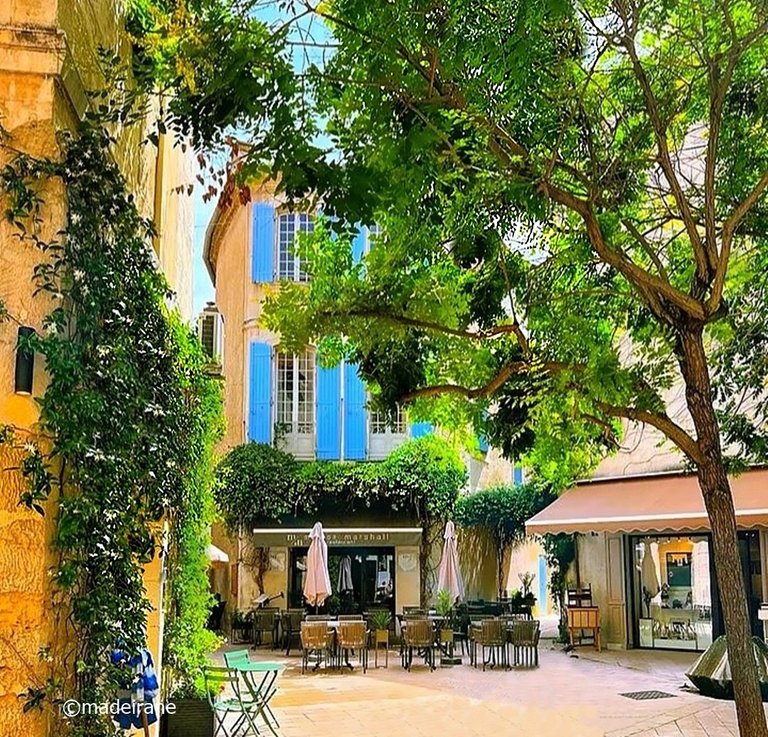
To our regret, we did not look at this city and its attractions in advance when planning our trip, so we simply had to pass by. But it’s really in vain. And if you are just planning your trip to Provence, then be sure to plan a stop in this city and its surroundings.
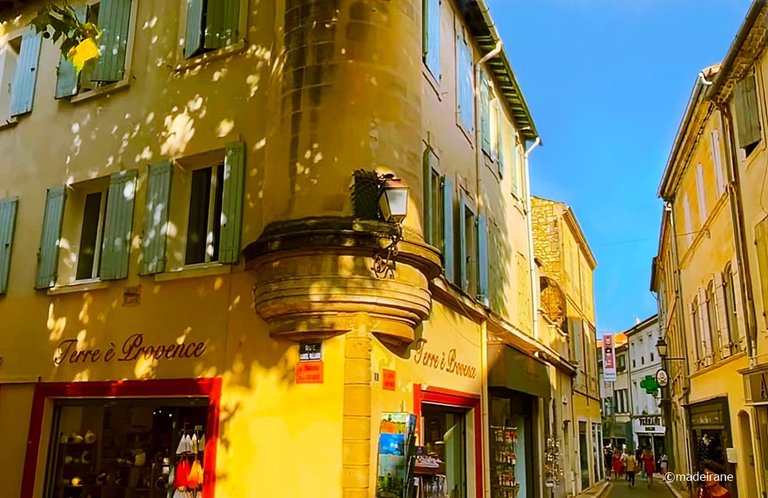
I have already written about the city of Arles, which is located not far from the place in which the great artist Van Gogh lived and worked. But he spent the last years of his life in this very place that I want to tell and show you about. Namely, in Saint-Rémy de Provence, not in the city, but in a hospital for the mentally ill, which is located in the building of the old monastery of St-Paul de Mausole.
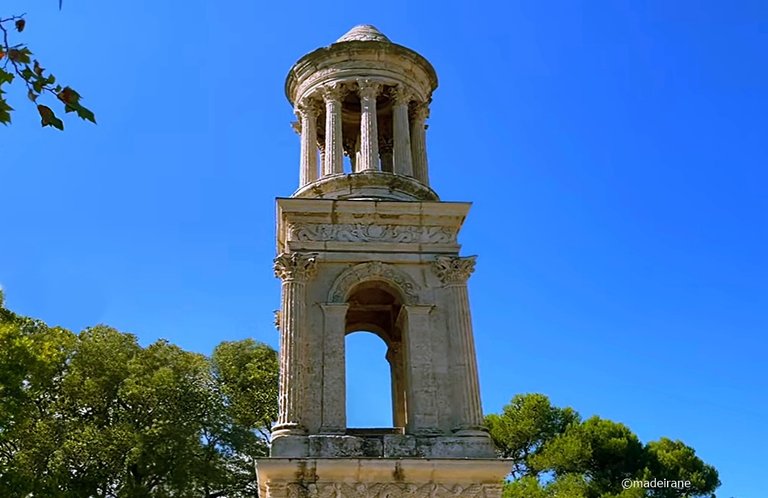
And unfortunately, we lost sight of this when preparing our travel plans. And quite by chance, on the way to the city of Avignon (France, Vaucluse), we noticed these architectural monuments along the road and the people who were wandering nearby. So we decided to stop and see what was so interesting here.
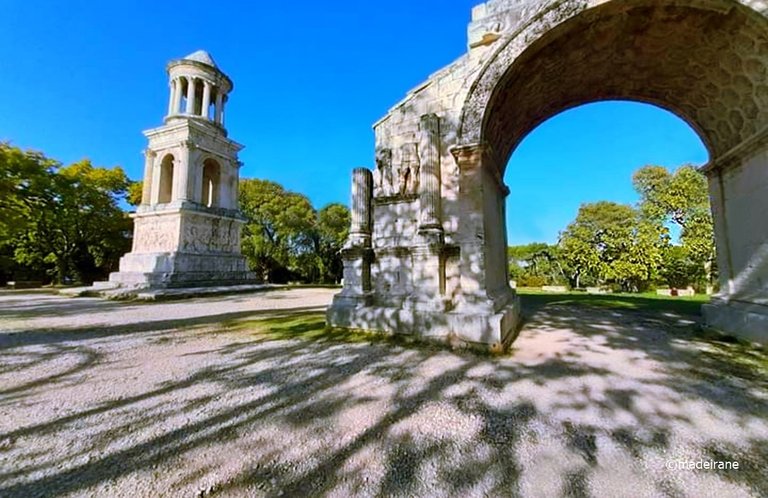
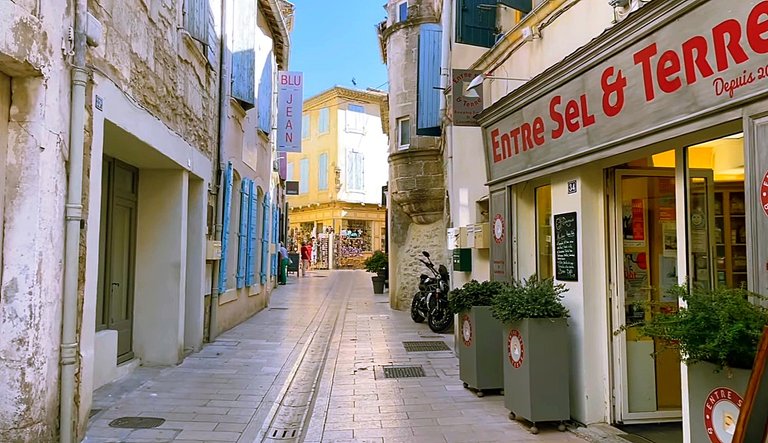
This is what the sights that attracted us look like. It is immediately clear that this is an arch that they loved to erect in Ancient Rome, but why did it stand here, and what is it? We decided to stop and find out more detail. And we turned out to be absolutely right - Les Antiques, the name of the place, really dates back to the period of Ancient Rome.
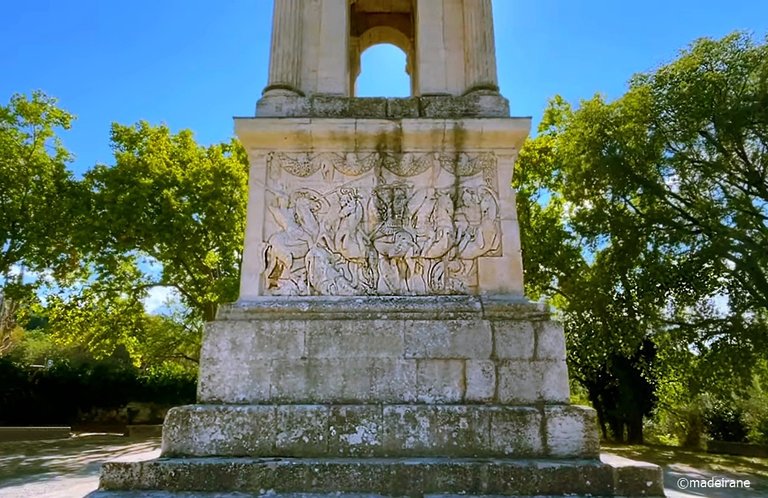
The Arch and Mausoleum of Les Antiques stand on this site and are quite well-preserved. But in fact, they didn’t always stand here; they were found during excavations of the ancient city Glanum, which is located five hundred meters from this place. And if we had known thse things before, we would definitely have added it to our plans. I looked at the photos when I was preparing this review.
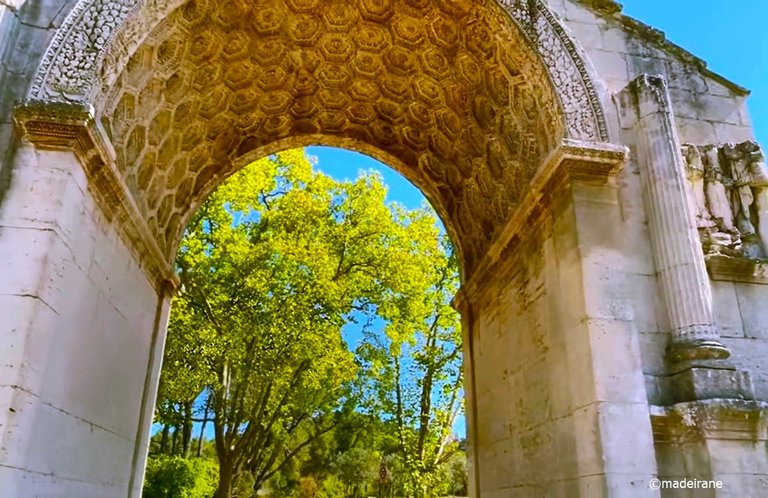
This is called a mausoleum, but in fact it is not a mausoleum, but a cenotaph. Roughly speaking, this is a tombstone and there is no gunpowder or burials inside. This Cenotaph is for two nephews of Augustus who met their death. This architectural monument dates back to 20 BC. We were amazed how well it has been preserved so far. Nearby there is a board with all the information about the architectural monuments in English.
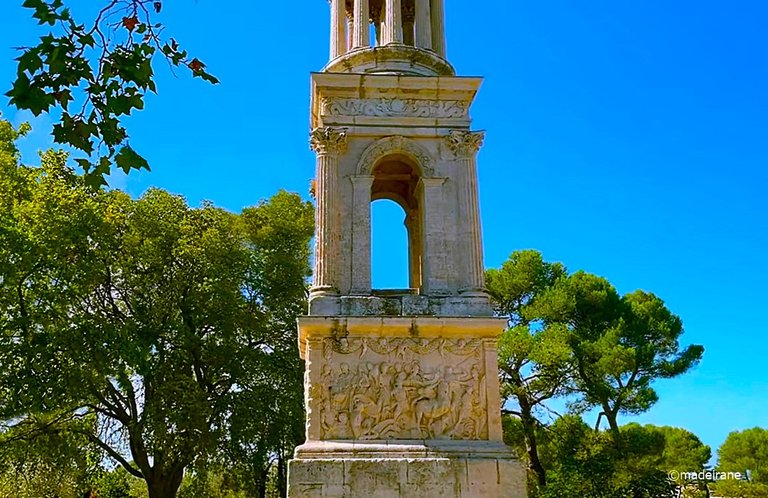
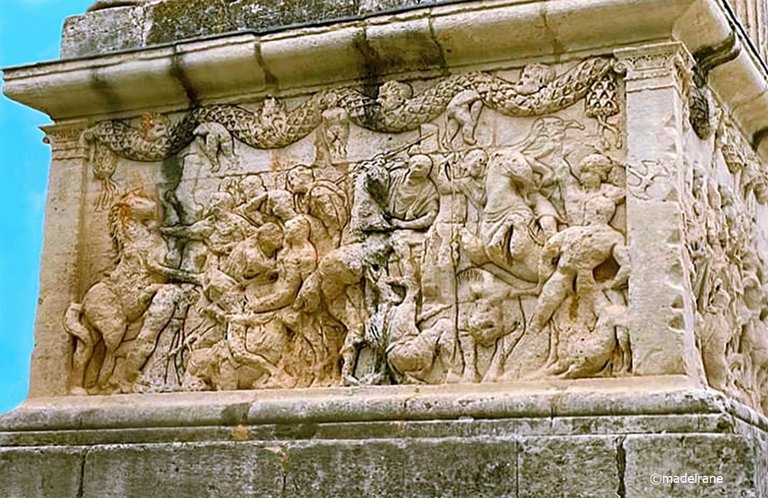
The triumphal arch dates back to a slightly later period during the Roman Empire's conquest of Marseille. Oh, these Romans, as soon as they conquer something, they immediately sculpt a triumphal arch to greet the winner with honors. And taking into account the fact that they conquered a lot, there are a lot of arches.
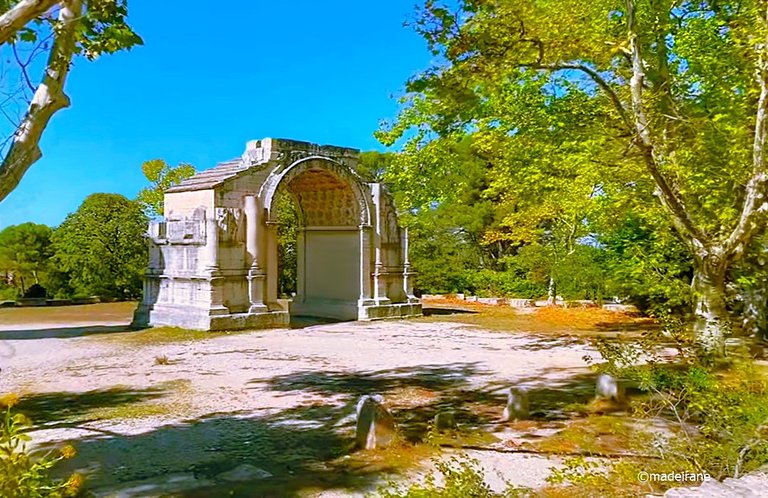
Unfortunately, not much has reached us. But on the other hand, can you imagine that this building is more than 2050 years old? And it still stands and will be standing for centuries to come. In fact, I have always been fascinated by such antic monuments. In general, the more I travel and see traces of the Roman Empire, the more I am amazed at its power and strength.

I saw the arch was decorated with grape leaves. This means the prosperity and fertility of these lands. Since Provence was part of the Roman Province, this is where the word Provence comes from.
At this place, there was a road called the Via Domitia, which connected Spain and the Roman Empire by land; it was built in Gaul. But this is not the only attraction of this place. In fact, there are at least three of them here, and if you count the old city, then all four.
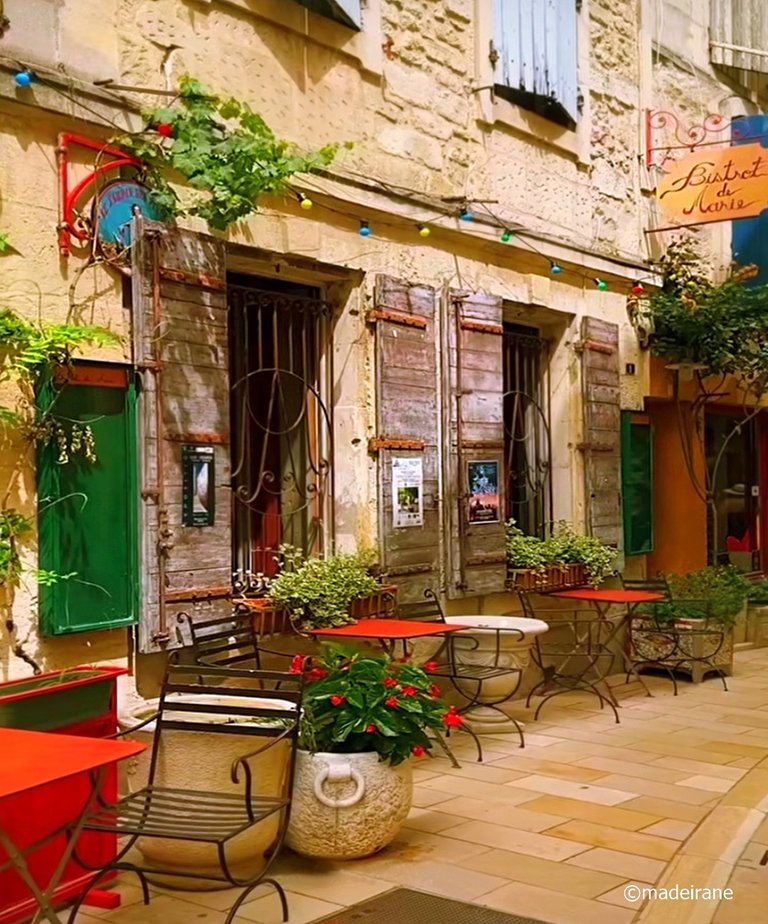
The next attraction of this place is the hospital for the mentally ill. There, Van Gogh lived and painted in his last years. It is surprising that Van Gogh himself asked his friends to find him a hospital where he could receive treatment, since he was often visited by thoughts of suicide and more. On the other hand, a healthy person will not cut off his ear, even if it hurts him very much. Therefore, it was probably partly the right decision.
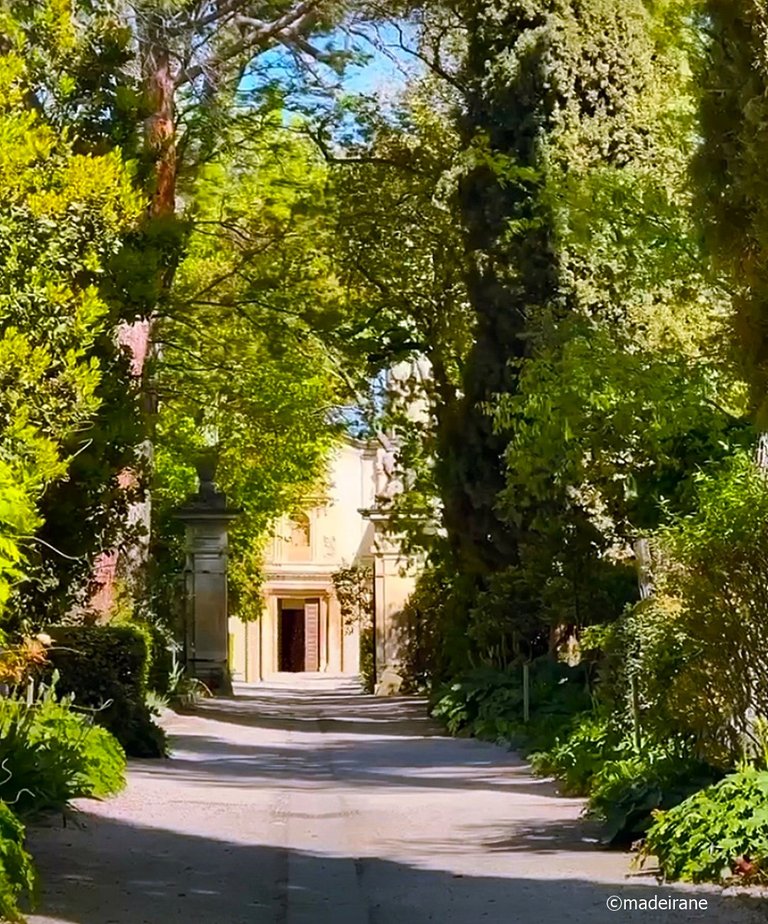
In recent years, the artist lived in Arles, and the hospital was near this town. But it was closed, more like a prison, since the windows were barred, and he lived in a solitary cell. But on the other hand, he was allowed to walk around the neighborhood and draw pictures.
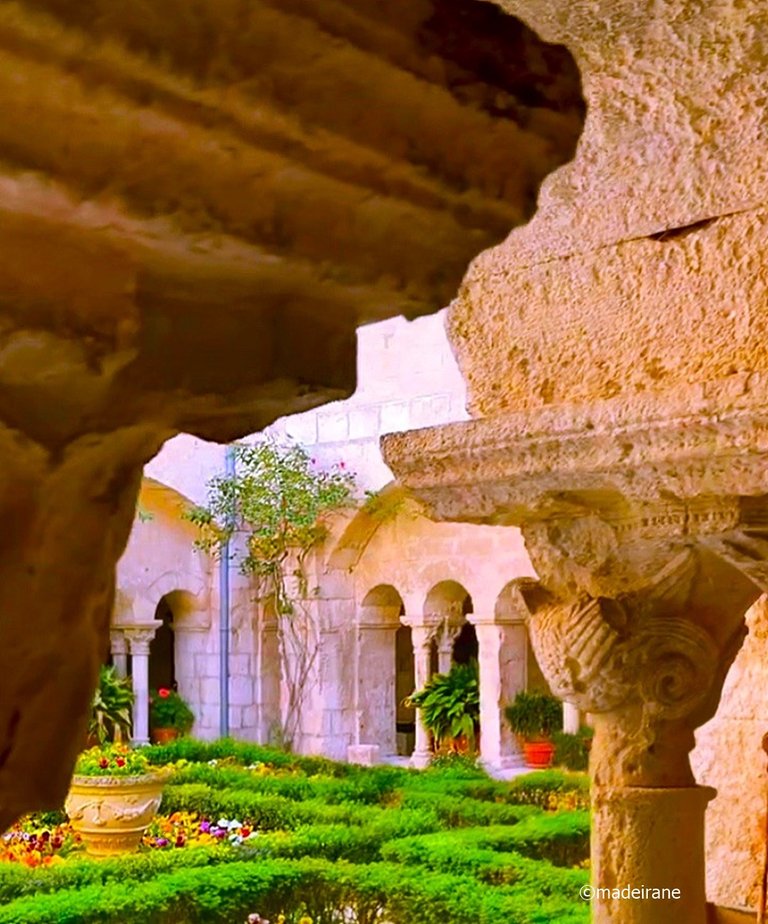
And there are such information boards with a picture of exactly the place where Van Gogh painted his paintings.
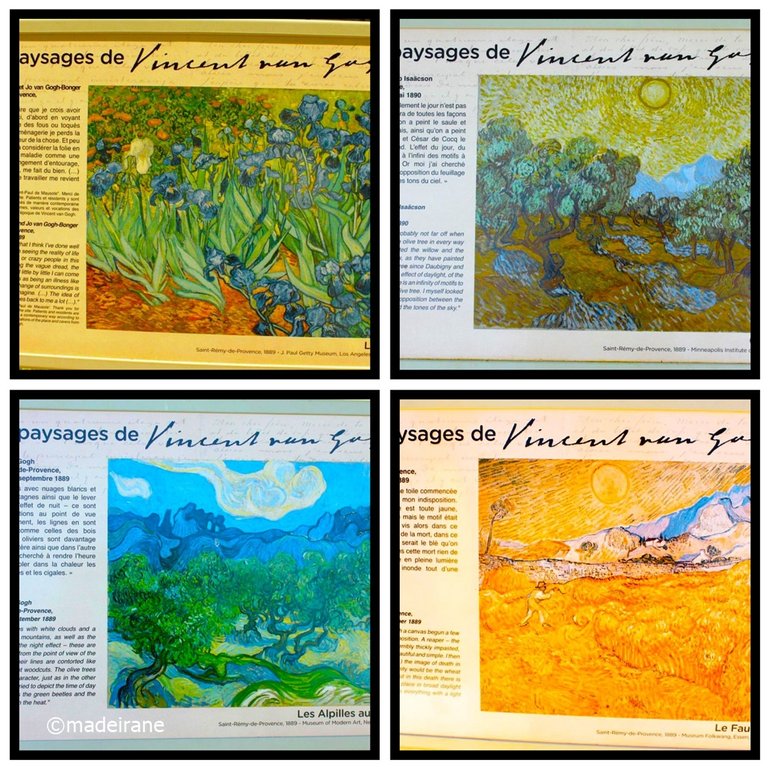
And this is what the St-Paul de Mausole hospital itself looks like, which, in those years, was located in the building of an old monastery. The mental hospital is still working, but even in these circumstances, Van Gogh’s personal room has become a tourist attraction. For a fee, you can see the room, as well as walk around the hospital grounds. To be honest, I was not happy about the prospect of visiting a functioning mental hospital. Although we love the artist’s work, we don’t love it enough to just look at his room where he died.
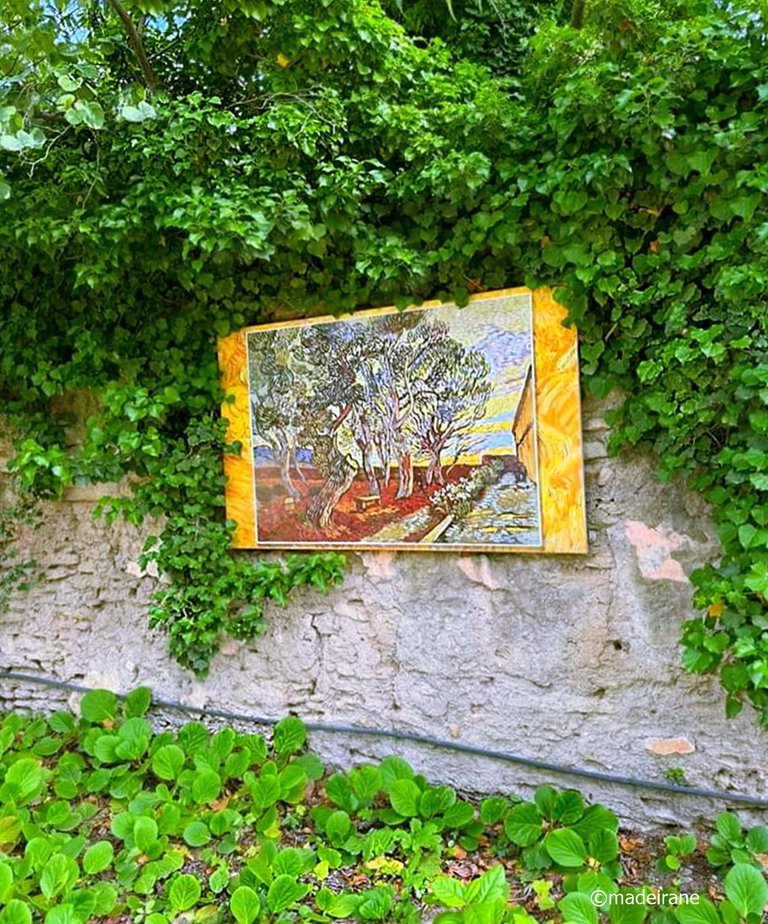
In addition to Van Gogh's room, here, firstly, is the very beautiful building of the monastery itself. The part of the building was visible from the entrance, so we explored its surrounding, but not the hospital and artist's room. By the way, there are now a lot of paintings by other patients of this hospital for sale there. A business that uses a well-known name.
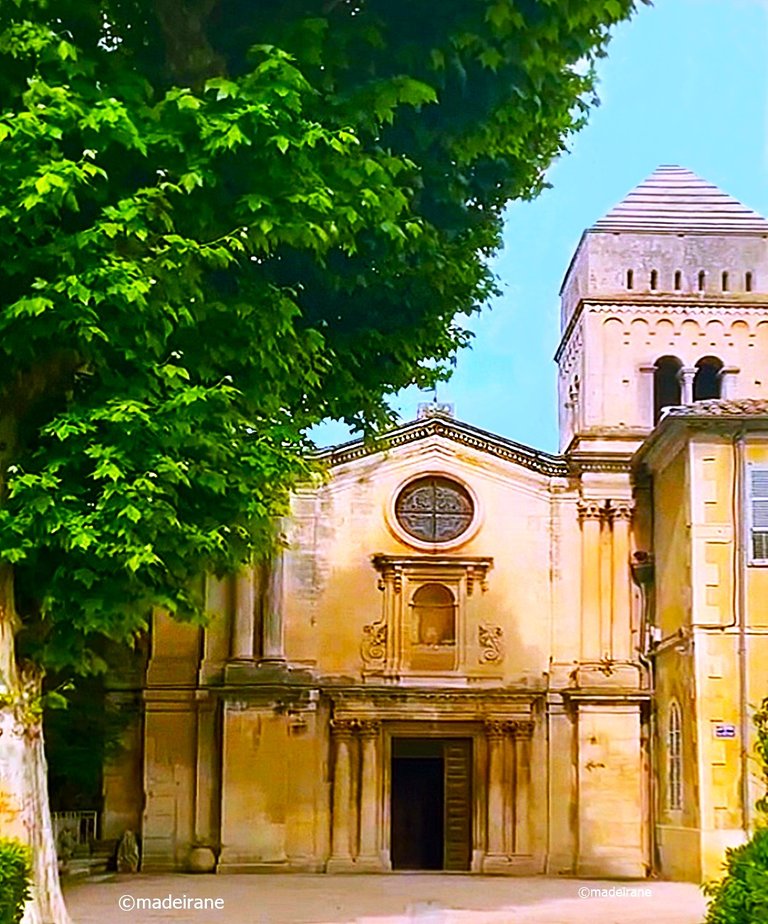
We went for a short walk around the neighborhood. This is the downside of independent travel. Sometimes you miss a lot of interesting things due to your ignorance and lack of preparedness.
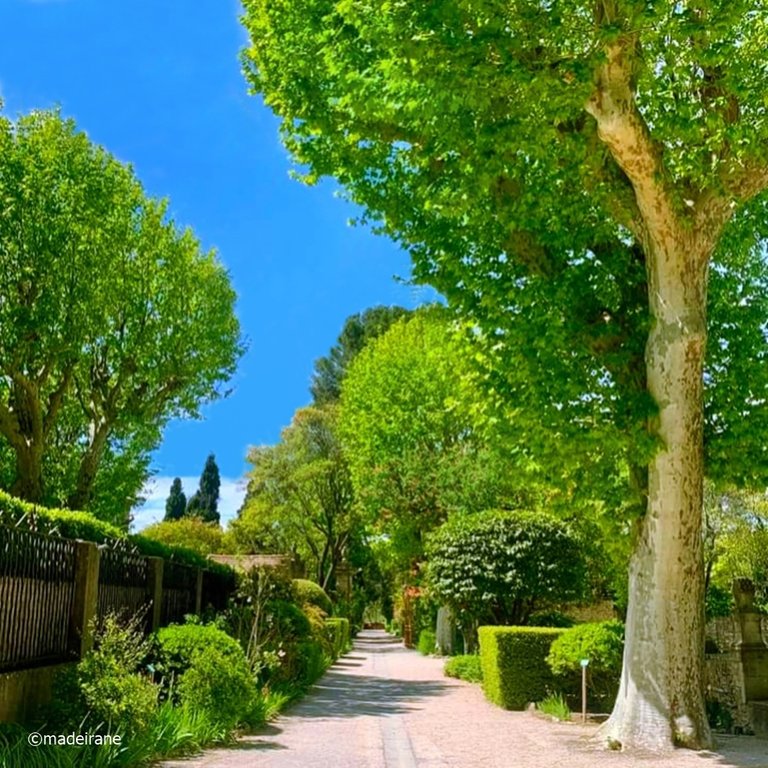
Not far from this place there is a sign indicating the exit from the city of Saint-Rémy-de-Provence. This is where we turned our way.
And not in vain, we really liked the city. We drove to the final point - to Republic Square. We left and went to the Church of Saint Martin - the main temple of Saint-Rémy de Provence. The church is famous for its interior decoration - paintings and paintings. In addition, organ concerts are held here. Nearby is the Alpilles Local History Museum, which provides an opportunity to get to know local life, history, nature and traditions better, but we missed it too.
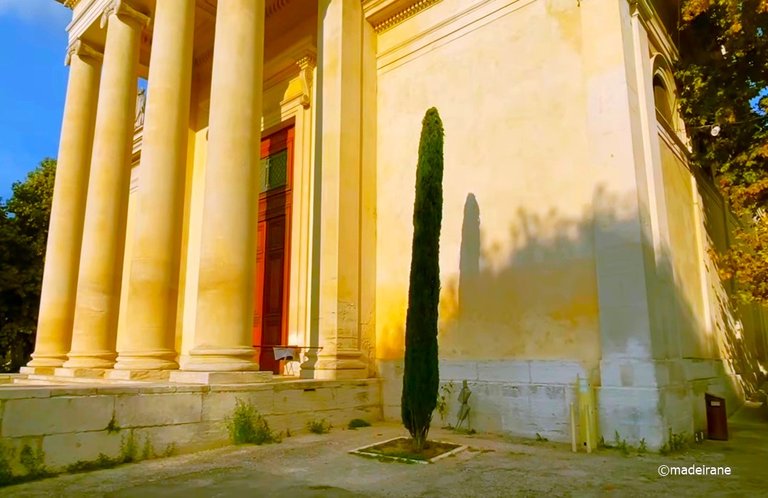
And because this city was not added to our plans, we walked around the city just a little. Here we found architecture perfectly preserved from ancient times, enjoyed the unique nature and visited the places where Van Gogh and Nostradamus lived.
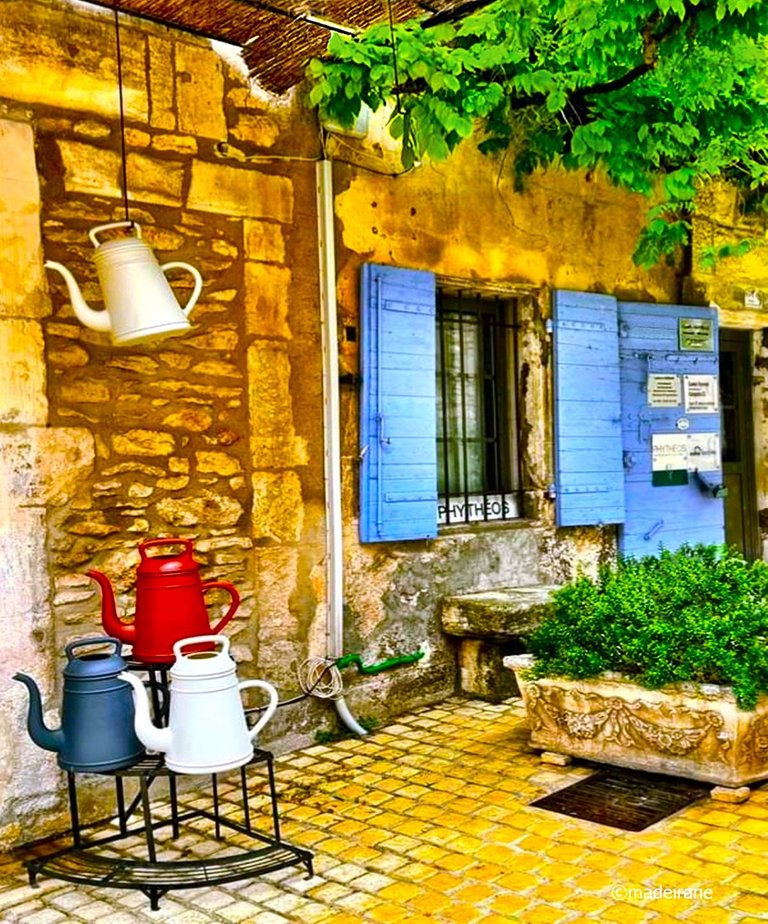
Fountain with a bust of the scientist Nostradamus on the corner of the street where he lived (built in the 19th century). Actually, at the end of this street is his house.
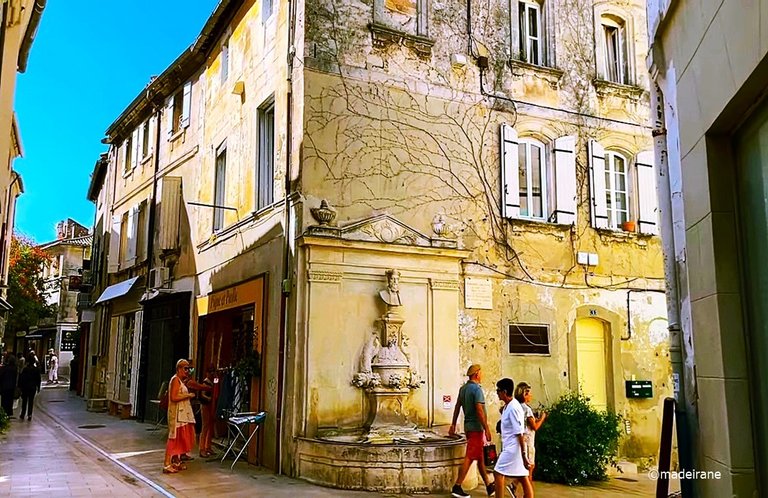
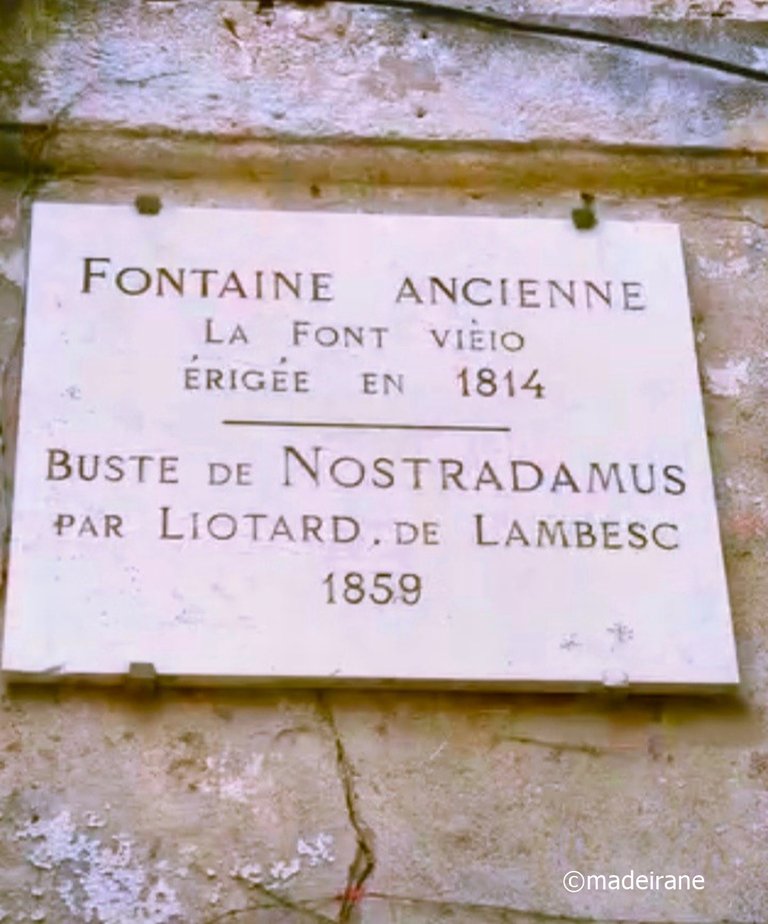
House of the great Nostra. The green entrance door is visible. In front of which hangs a modest plaque telling of this glorious fact. In general, Nostradamus is not held in high esteem by the French; they remember him, but without any admiration or hype - along with hundreds of other historical figures originally from France who have made a significant contribution to world culture.
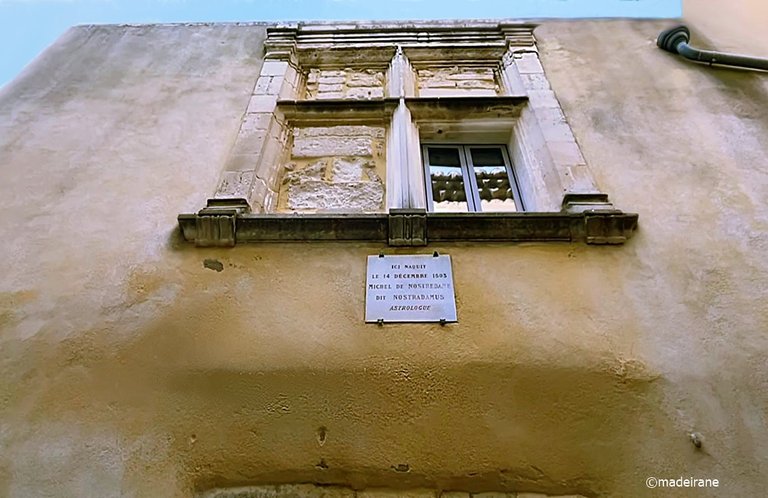
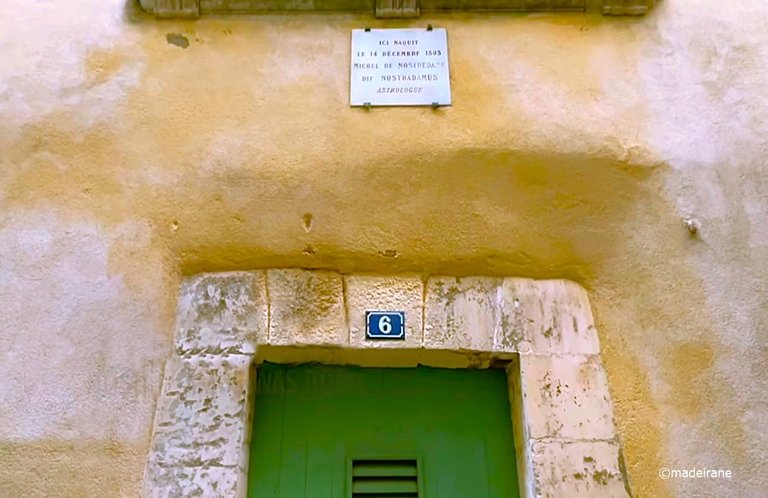
From almost anywhere in the city we could see the rocky mountains south of Saint-Rémy de Provence. It has an Alpine name, and it is protected as a biosphere reserve. The local mountains are not high, and even an unprepared traveler can walk along the hiking trails.
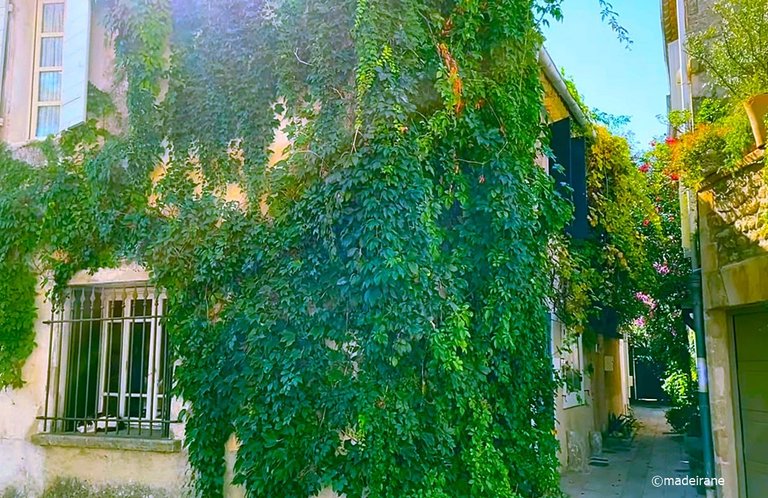
So many attractions of the city of Saint-Rémy de Provence are collected in one place. And if you are going to this region, then plan more time for this excursion than we did. There are so many unseen things still we should look for. And we stopped here completely by accident and not in vain.
💝💝💝💝💝💝💝💝💝💝
With love, @madeirane
Photos are taken by me.
© 2024
Translated from Lithuanian with DeepL.com (free version).
Šiandien savo apžvalgoje noriu grįžti į savo mylimą Provansą, apie kurį jau daug rašiau ir apie savo kelionę po nuostabų Prancūzijos regioną. Mano apžvalga bus skirta Saint-Remy de Provence. Ne pačiam miestui, o jo lankytinoms vietoms. Bet pirmiausia apie tai, kas svarbiausia.
Savarankiška kelionė automobiliu, mūsų atveju - nuomotu automobiliu, turi savų privalumų. O pagrindinis iš jų yra tas, kad galime sustoti, kur tik norime, ir žiūrėti tai, kas mums patinka. Taip buvo ir šį kartą.
Mūsų apgailestavimui, planuodami kelionę iš anksto neapžiūrėjome šio miesto ir jo lankytinų vietų, todėl tiesiog turėjome pravažiuoti pro šalį. Bet tai tikrai veltui. O jei dar tik planuojate kelionę į Provansą, būtinai suplanuokite sustojimą šiame mieste ir jo apylinkėse.
Jau rašiau apie Arlio miestą, kuris yra netoli tos vietos, kurioje gyveno ir kūrė didysis dailininkas Van Gogas. Tačiau paskutiniuosius savo gyvenimo metus jis praleido būtent šioje vietoje, apie kurią noriu jums papasakoti ir parodyti. Būtent, Saint-Rémy de Provence, bet ne mieste, o psichikos ligonių ligoninėje, kuri įsikūrusi senojo St-Paul de Mausole vienuolyno pastate.
Ir, deja, ruošdami kelionės planus, pamiršome apie tai. Ir visai atsitiktinai, pakeliui į Avinjono miestą (Prancūzija, Vokliuzas), pastebėjome šiuos architektūros paminklus pakelėje ir šalia besisukiojančius žmones. Taigi nusprendėme sustoti ir pažiūrėti, kas čia tokio įdomaus.
Štai kaip atrodo mus patraukę vaizdai. Iš karto aišku, kad tai arka, kurią mėgo statyti Senovės Romoje, bet kodėl ji čia stovėjo ir kas tai yra? Nusprendėme sustoti ir išsiaiškinti daugiau detalių. Ir pasirodė, kad buvome visiškai teisūs - „Les Antiques“, taip vadinasi ši vieta, iš tiesų siekia Senovės Romos laikotarpį.
Šioje vietoje stovi Les Antiques arka ir mauzoliejus, kurie yra gana gerai išsilaikę. Tačiau iš tiesų jie čia stovėjo ne visada - jie buvo rasti kasinėjant senovinį Glanumo miestą, esantį už penkių šimtų metrų nuo šios vietos. Ir jei būtume žinoję apie šiuos dalykus anksčiau, tikrai būtume įtraukę juos į savo planus. Rengdamas šią apžvalgą peržiūrėjau nuotraukas.
Tai vadinama mauzoliejumi, bet iš tikrųjų tai ne mauzoliejus, o kenotafas. Grubiai tariant, tai yra antkapinis paminklas, o viduje nėra nei šaudyklų, nei laidojimo vietų. Šis kenotafas skirtas dviem Augusto sūnėnams, sutikusiems mirtį. Šis architektūros paminklas datuojamas 20 m. pr. m. e. Buvome nustebinti, kaip gerai jis iki šiol išlikęs. Netoliese stovi lenta, kurioje visa informacija apie architektūros paminklus pateikta anglų kalba.
Triumfo arka pastatyta kiek vėliau, Romos imperijai užkariavus Marselį. Ak, tie romėnai, kai tik ką nors užkariauja, tuoj pat iškelia triumfo arką, kad garbingai pasitiktų nugalėtoją. O atsižvelgiant į tai, kad jie daug ką užkariavo, arkų yra labai daug.
Deja, nedaug jų pasiekė mus. Bet, kita vertus, ar galite įsivaizduoti, kad šiam pastatui daugiau nei 2050 metų? Ir jis vis dar stovi ir stovės dar ne vieną šimtmetį. Tiesą sakant, mane visada žavėjo tokie antkapiniai paminklai. Apskritai kuo daugiau keliauju ir matau Romos imperijos pėdsakų, tuo labiau mane stebina jos galybė ir jėga.
Mačiau, kad arka buvo papuošta vynuogių lapais. Tai reiškia šių žemių klestėjimą ir derlingumą. Kadangi Provansas buvo Romos provincijos dalis, iš čia ir kilo žodis Provanso provincija.
Šioje vietoje buvo kelias, vadinamas Via Domitia, kuris sausuma jungė Ispaniją ir Romos imperiją; jis buvo nutiestas Galijoje. Tačiau tai ne vienintelė šios vietovės įžymybė. Iš tiesų jų čia yra mažiausiai trys, o jei skaičiuosime senamiestį, tai visos keturios.
Kita šios vietos įžymybė yra psichikos ligonių ligoninė. Joje Van Gogas gyveno ir tapė paskutiniaisiais savo gyvenimo metais. Šias nuostabias vietas dailininkas vieną po kitos nutapė savo paskutinėse drobėse.
Keista, kad pats Van Gogas prašė draugų surasti jam ligoninę, kurioje galėtų gydytis, nes jį dažnai aplankydavo mintys apie savižudybę ir ne tik. Kita vertus, sveikas žmogus nenusipjaus ausies, net jei jam labai skauda. Todėl tikriausiai tai iš dalies buvo teisingas sprendimas.
Pastaraisiais metais dailininkas gyveno Arlyje, o ligoninė buvo netoli šio miesto. Tačiau ji buvo uždara, labiau panaši į kalėjimą, nes langai buvo užkalti, ir jis gyveno vienutėje. Tačiau, kita vertus, jam buvo leidžiama vaikščioti po apylinkes ir piešti paveikslus.
Ir ten yra tokie informaciniai stendai, kuriuose pavaizduota būtent ta vieta, kur Van Gogas tapė savo paveikslus.
O štai kaip atrodo pati St-Paul de Mausole ligoninė, kuri tais metais buvo įsikūrusi seno vienuolyno pastate. Psichiatrijos ligoninė tebeveikia, tačiau net ir tokiomis aplinkybėmis Van Gogo asmeninis kambarys tapo turistų traukos objektu. Už tam tikrą mokestį galima apžiūrėti kambarį, taip pat pasivaikščioti po ligoninės teritoriją. Tiesą sakant, manęs nedžiugino perspektyva apsilankyti veikiančioje psichiatrijos ligoninėje. Nors mes mylime dailininko kūrybą, mums neužtenka vien apžiūrėti jo kambarį, kuriame jis mirė.
Ir, kaip vėliau paaiškėjo, buvo gaila, kad nevažiavome į pačią ligoninę. Be Van Gogo kambario, čia, pirmiausia, yra labai gražus paties vienuolyno pastatas. Taigi, jei esate čia, nekartokite mūsų klaidos ir nepraleiskite šios progos.
Deja, pastatas buvo matomas nuo įėjimo, bet mes nusprendėme, kad neužeisime. Beje, dabar ten parduodama daug kitų šios ligoninės pacientų tapytų paveikslų. Verslas, kuris naudojasi gerai žinomu vardu.
Trumpai pasivaikščiojome po apylinkes. Tai savarankiško keliavimo trūkumas. Kartais dėl savo nežinojimo ir nepasiruošimo praleidi daug įdomių dalykų.
Netoli šios vietos yra ženklas, nurodantis išvažiavimą iš Saint-Rémy-de-Provence miesto. Čia ir pasukome savo keliu.
Ir ne veltui, miestas mums labai patiko. Nuvažiavome į galutinį tašką - į Respublikos aikštę. Iš jos išėjome ir nuėjome į Saint Martin bažnyčią - pagrindinę Saint-Remy de Provence šventovę. Bažnyčia garsėja savo interjero puošyba - paveikslais ir tapyba. Be to, čia vyksta vargonų koncertai. Netoliese yra Alpių kraštotyros muziejus, kuriame galima geriau pažinti vietos gyvenimą, istoriją, gamtą ir tradicijas, tačiau ir jo nepastebėjome.
Kadangi šis miestas nebuvo įtrauktas į mūsų planus, šiek tiek pasivaikščiojome po miestą. Čia radome puikiai nuo senų laikų išlikusią architektūrą, gėrėjomės unikalia gamta ir aplankėme vietas, kuriose gyveno Van Gogas ir Nostradamas.
Fontanas su mokslininko Nostradamo biustu ant gatvės, kurioje jis gyveno, kampo (pastatytas XIX a.). Tiesą sakant, šios gatvės gale yra jo namas.
Didžiojo Nostradamo namas. Matomos žalios įėjimo durys. Priešais kurias kabo kukli lentelė, pasakojanti apie šį šlovingą faktą. Apskritai prancūzai Nostradamo labai negerbia; jie prisimena jį, bet be jokio susižavėjimo ar ažiotažo - kartu su šimtais kitų iš Prancūzijos kilusių istorinių asmenybių, įnešusių svarų indėlį į pasaulio kultūrą.
Beveik iš bet kurios miesto vietos galėjome matyti uolėtus kalnus į pietus nuo Saint-Remy de Provence. Jis turi alpinį pavadinimą ir yra saugomas kaip biosferos rezervatas. Vietiniai kalnai nėra aukšti, todėl net ir nepasirengęs keliautojas gali pasivaikščioti pėsčiųjų takais.
Tiek daug Saint-Rémy de Provence miesto lankytinų vietų surinkta vienoje vietoje. Ir jei ketinate vykti į šį regioną, tai ekskursijai suplanuokite daugiau laiko nei mes. Yra tiek daug nematytų dalykų, kurių dar turėtume paieškoti. O mes čia sustojome visiškai atsitiktinai ir ne veltui.
I'm fascinated by your trip to Saint-Rémy-de-Provence! Your detailed and fascinating description transported me right to Provence, making me feel like I was there with you. I especially enjoyed your stories about local markets and visits to historical sites which added authenticity to your experience.
Thank you very much.
Congratulations @madeirane! You have completed the following achievement on the Hive blockchain And have been rewarded with New badge(s)
Your next target is to reach 35000 upvotes.
You can view your badges on your board and compare yourself to others in the Ranking
If you no longer want to receive notifications, reply to this comment with the word
STOPCheck out our last posts: